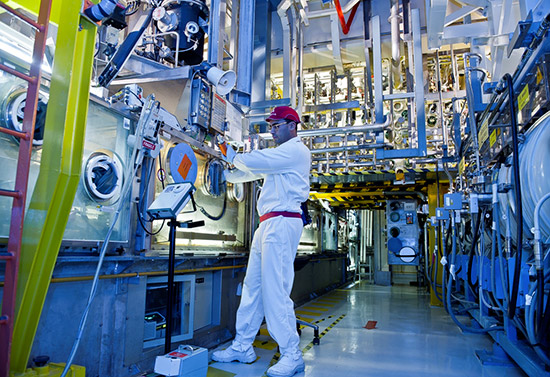Gerard Mourou—one of the three winners of the 2018 Nobel Prize for Physics—claims that the lifespan of radioactive waste could potentially be cut to minutes from thousands of years. Although Mourou, 74, is quick to say that the laser option for nuclear waste that he and Irvine, California-based Professor Toshiki Tajima are working on may be years away, its promise has created a flurry of excitement for the sector in France.
Environmental group Greenpeace estimates that there’s a global stockpile of about 250,000 tons of toxic spent fuel spread across 14 countries, based on data from the International Atomic Energy Agency. Of that, 22,000 cubic meters—roughly equivalent to a three-meter tall building covering an area the size of a soccer pitch—is hazardous, according to the IAEA. A 2015 report by GE-Hitachi put the cost of disposing nuclear waste—outside of China, Russia and India—at well over $100 billion. France produces more nuclear waste per-capita than any other country. With almost 72 percent of its electricity coming from nuclear energy—the most in the world—it generates 2 kilograms of radioactive waste per person each year. And although only a fraction of that is highly toxic, more than 60 years after getting into nuclear energy, the country still has no definitive way to cope with it.
In April 2019, France opened its third national debate on nuclear waste, bringing together policy makers, advocacy groups and scientists to discuss handling an estimated 10,000 cubic meters of radioactive waste collectively produced by the country’s 58 reactors over their lifespan. And that doesn’t include atomic material generated by the military and medical sectors.
The most toxic parts are stored right now in short-term facilities in La Hague in Normandy, in Marcoule and Cadarache in southern France and in Valduc, near Dijon. At the facility in La Hague, an hour’s drive from the D-Day beaches, specially designed robots cast the most radioactive nuclear waste into glass casings before putting them in inox containers. Already the world’s largest facility for processing atomic waste, it is constantly being expanded—making a long-term solution urgent.
State-controlled nuclear entities Electricite de France SA and Orano SA, charged with nuclear waste management, and CEA, France’s Atomic Energy Agency, have spent billions on the toxic material. At least another 25 billion euros ($28 billion) is set to be plowed into an underground maze of tunnels near the village of Bure in northeastern France that could be the final resting place for the highly toxic waste starting in 2025. Like with other deep storage sites in place, under construction or being considered in countries including the U.S., Japan, Finland and Sweden, the Bure plan has drawn protests. Greenpeace has pointed to several risks, not least of which being the chance of the toxic material seeping into the groundwater or a fire releasing radioactive gases.
Enter Mourou, with his high-intensity laser option. The physicist’s work has paved the way for the shortest and most-intense laser pulses ever created. In his Nobel Lecture on Dec. 8, Mourou laid out his vision for using his “passion for extreme light” to address the nuclear-waste problem. The process he and Tajima are working on is called transmutation, which involves changing the composition of an atom’s nucleus by bombarding it with a laser. “It’s like karate—you deliver a very strong force in a very, very brief moment,” said Mourou…Transmutation research has been going on for three decades, with efforts in the U.K., Germany, Belgium, U.S. and Japan either failing or in various stages of study…“I can imagine that the physics might work, but the transmutation of high-level nuclear waste requires a number of challenging steps, such as the separation of individual radionuclides, the fabrication of targets on a large scale, and finally, their irradiation and disposal,” said Rodney C. Ewing, a professor in nuclear security and geological sciences at Stanford University. A radionuclide is an atom that has excess nuclear energy, making it unstable.
Excerpts from Zapping Nuclear Waste in Minutes Is Nobel Winner’s Holy Grail Quest, Bloomberg, Apr. 2, 2019
